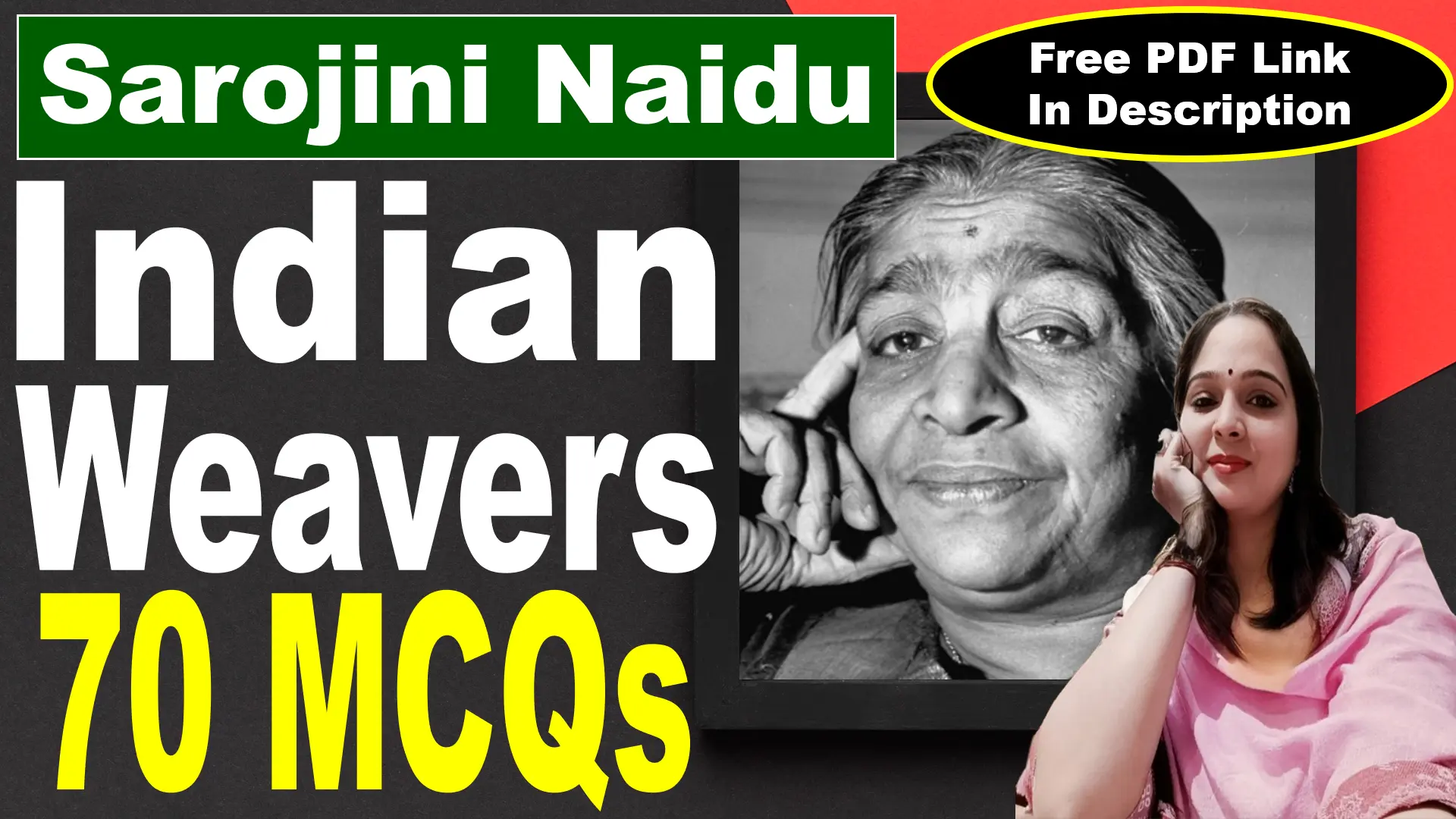Why does Kamala Das focus on the eunuchs in this poem?
A) To romanticize their unique cultural role
B) To highlight their marginalization and struggles
C) To glorify their artistic talents
D) To portray them as symbols of resistance
Answer: B) To highlight their marginalization and struggles
Explanation: Kamala Das portrays the eunuchs as symbols of societal rejection. By emphasizing their alienation, inner despair, and unfulfilled lives, she sheds light on the struggles faced by marginalized groups. Her focus challenges societal norms, urging readers to reflect on the treatment of those who exist outside conventional frameworks.
What role do the green tattoos on the eunuchs’ cheeks play in the poem?
A) They signify their individuality and attempts at beautification.
B) They symbolize their connection to nature.
C) They are marks of cultural tradition.
D) They indicate societal acceptance.
Answer: A) They signify their individuality and attempts at beautification.
Explanation: The green tattoos symbolize the eunuchs’ efforts to assert their identity and express themselves. These marks of adornment contrast with their internal despair, highlighting the duality of their existence: striving for recognition and acceptance while remaining marginalized by society.
What does the “fiery gulmohur” tree symbolize in the poem?
A) The vibrant energy of the eunuchs
B) The burning struggles of the eunuchs’ lives
C) The oppressive beauty of nature
D) The societal rejection of marginalized groups
Answer: B) The burning struggles of the eunuchs’ lives
Explanation: The gulmohur tree, with its bright yet fiery presence, reflects the eunuchs’ outward vibrancy and internal pain. It serves as a metaphor for their struggles—burning with unfulfilled desires and societal rejection, yet visible and striking in their attempt to claim identity and recognition.
How are the eunuchs described in terms of their movements during the dance?
A) Controlled and poised
B) Fervent and intense
C) Disjointed and awkward
D) Calm and composed
Answer: B) Fervent and intense
Explanation: The eunuchs’ movements are fervent, capturing the intensity of their emotional struggle. Their performance, though outwardly energetic and vibrant, conveys desperation for acknowledgment. This fervor reflects their attempt to express the uncontainable anguish and marginalization they endure.
What does Kamala Das critique through The Dance of the Eunuchs?
A) The lack of education in marginalized communities
B) Society’s neglect and alienation of the eunuchs
C) Gender inequality in artistic traditions
D) Nature’s indifference to human suffering
Answer: B) Society’s neglect and alienation of the eunuchs
Explanation: Kamala Das critiques societal indifference and rejection of marginalized groups like the eunuchs. By portraying their vibrant yet hollow existence, she highlights the failure of society to provide them with dignity and inclusion, underscoring the systemic alienation they face.
Which phrase captures the eunuchs’ emotional state during their performance?
A) “Vacant ecstasy”
B) “Vibrant energy”
C) “Chaotic joy”
D) “Complete fulfillment”
Answer: A) “Vacant ecstasy”
Explanation: The phrase “vacant ecstasy” reflects the eunuchs’ emotional duality—an outward expression of joy that conceals inner emptiness and despair. This oxymoronic phrase emphasizes their struggle to appear vibrant while grappling with deep-seated emotional pain and societal rejection.
How does Kamala Das explore the theme of identity in the poem?
A) By portraying the eunuchs’ desire for self-expression
B) By highlighting the eunuchs’ rejection of societal norms
C) By glorifying the eunuchs’ unique culture
D) By depicting the eunuchs as disconnected from their identities
Answer: A) By portraying the eunuchs’ desire for self-expression
Explanation: The eunuchs’ adornments and intense performance reflect their longing for recognition and identity. Kamala Das uses their plight to explore the broader theme of identity, showing how societal rejection suppresses their individuality while their vibrant attempts at self-expression challenge these barriers.
What type of rain is described in the poem?
A) Heavy and destructive
B) Meagre and unsatisfying
C) Gentle and refreshing
D) Symbolic and purifying
Answer: B) Meagre and unsatisfying
Explanation: The rain, symbolic of relief and renewal, is meagre and fails to alleviate the oppressive heat, reflecting the eunuchs’ inability to find solace or escape their suffering. This imagery reinforces the inadequacy of societal recognition or support in addressing the struggles of marginalized groups.
What aspect of the eunuchs’ lives does the metaphor of “half-burnt logs” highlight?
A) Their vibrancy and resilience
B) Their unfulfilled existence and societal rejection
C) Their connection to natural elements
D) Their traditional cultural role
Answer: B) Their unfulfilled existence and societal rejection
Explanation: The metaphor portrays the eunuchs as incomplete and rejected, much like half-burnt logs that remain unfinished and discarded. This powerful image emphasizes their unfulfilled lives, societal neglect, and the inability to fully integrate into the mainstream, capturing the essence of their marginalization.
What does the poem ultimately suggest about marginalized communities?
A) They are inherently disconnected from society.
B) They experience joy and freedom in isolation.
C) They suffer deeply due to societal rejection and neglect.
D) They resist societal norms through their cultural expressions.
Answer: C) They suffer deeply due to societal rejection and neglect.
Explanation: Kamala Das highlights the deep suffering of marginalized groups like the eunuchs, stemming from societal exclusion and unfulfilled desires. Their attempts at self-expression are overshadowed by rejection, and the poem critiques society’s role in perpetuating their despair rather than offering inclusion or relief.





